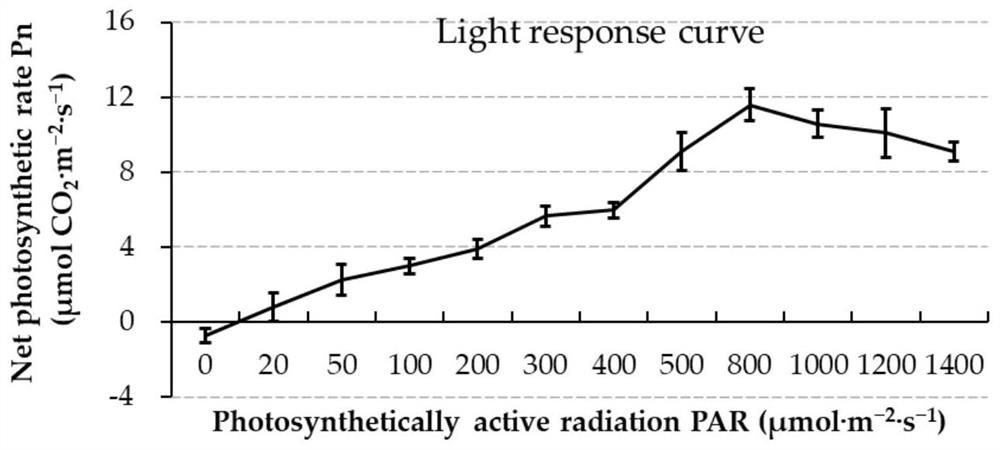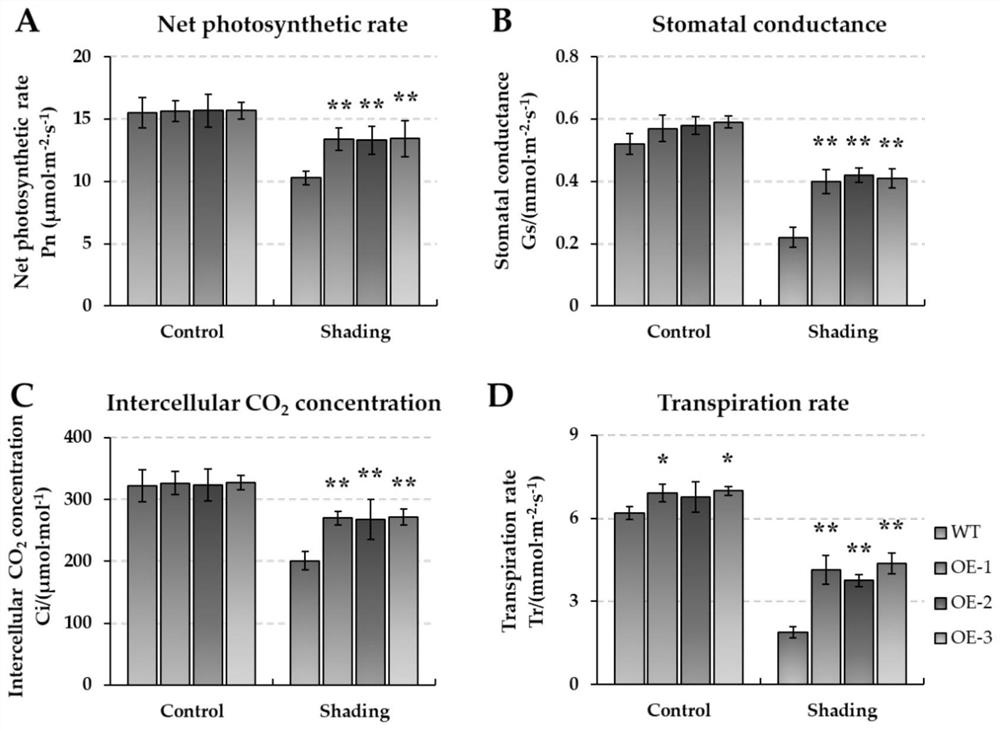Application and method of Brassica napus bnmapk1 gene in improving plant shade tolerance
A technology of Brassica napus and shade tolerance, which is applied in the field of plant genetic engineering and can solve problems such as effects that have not been reported yet
- Summary
- Abstract
- Description
- Claims
- Application Information
AI Technical Summary
Problems solved by technology
Method used
Image
Examples
Embodiment 1
[0035] Example 1, Cloning of BnMAPK1 promoter and analysis of cis-acting elements
[0036] The 3-4 week-old Brassica napus Zhongyou 821 seedlings were selected, and the genomic DNA (gDNA) of the roots, stems, and leaves were extracted respectively, and mixed at equal masses to prepare a mixed gDNA template for future use. Referring to the Brassica napus sequence in the GENOSCOPE database, specific primers ProBnMAPK1-F and ProBnMAPK1-R were designed, and the promoter of the BnMAPK1 (BnaC05g07560D) gene was cloned using the mixed gDNA of Zhongyou 821 plant as a template. A promoter with a length of 1389bp was obtained and named as ProBnMAPK1. The cloning primer sequences are as follows:
[0037] ProBnMAPK1-F SEQ: 5'-ATACTATTGTTTAAATGCATGTACTG-3' (SEQ ID NO.2);
[0038] ProBnMAPK1-R SEQ: 5'-TAGTTTCCTCTCCTTCTTCATCACA-3' (SEQ ID NO.3);
[0039] The cloned promoter sequence is shown in SEQ ID NO.4.
[0040] Using the PlantCARE online tool to analyze the cis-acting elements of Pr...
Embodiment 2
[0044] Embodiment 2, the photoresponse curve determination of Brassica napus Zhongyou 821
[0045] In order to explore how BnMAPK1 regulates the light response process, the photosynthetic curves of Brassica napus Zhongyou 821DH line plants were firstly measured. When the seedlings grew to 3-4 weeks, three healthy plants with basically the same growth were taken, and the net photosynthetic rate Pn (Netphotosynthetic rate). will CO 2 Concentration set to ambient CO 2 Concentration, photosynthetically active radiation PAR (Photosynthetically active radiation) gradient from high to low is set to 1400, 1200, 1000, 800, 500, 400, 300, 200, 100, 50, 20, 0μmol m –2 ·s –1 , respectively measure the corresponding Pn under each PAR intensity of the leaves. The photoresponse curve (http: / / photosynthetic.sinaapp.com / index.html) was fitted online using the rectangular hyperbolic correction model of Ye et al., and the light saturation point LSP (Light saturation point) and light compens...
Embodiment 3
[0049] Example 3. Effects of BnMAPK1 Overexpression on Photosynthetic Characteristics of Brassica napus in Weak Light Environment
[0050] Brassica napus BnMAPK1 overexpression (OE) and Zhongyou 821DH wild-type (WT) plants were used as test materials, and 300 μmol·m –2 ·s –1 Low light treatment. The relative content of chlorophyll, photosynthetic parameters, chlorophyll fluorescence parameters and RUBP carboxylase (Ribulose-1,5-bisphosphate carboxylase / oxygenase) activity were measured in different periods of low light treatment.
[0051] 3.1 The effect of overexpression of BnMAPK1 on the relative content of chlorophyll in low-light environment
[0052] Select 3 stable expression T 3 The BnMAPK1 overexpression lines (OE-1, OE-2, OE-3) and Zhongyou 821DH line WT of the first generation were selected. Three healthy plants with the same growth were selected for each line, and they were treated with low light at 0, 7, 14, After 21 and 28 d, the relative chlorophyll content (SP...
PUM
 Login to View More
Login to View More Abstract
Description
Claims
Application Information
 Login to View More
Login to View More - R&D
- Intellectual Property
- Life Sciences
- Materials
- Tech Scout
- Unparalleled Data Quality
- Higher Quality Content
- 60% Fewer Hallucinations
Browse by: Latest US Patents, China's latest patents, Technical Efficacy Thesaurus, Application Domain, Technology Topic, Popular Technical Reports.
© 2025 PatSnap. All rights reserved.Legal|Privacy policy|Modern Slavery Act Transparency Statement|Sitemap|About US| Contact US: help@patsnap.com



